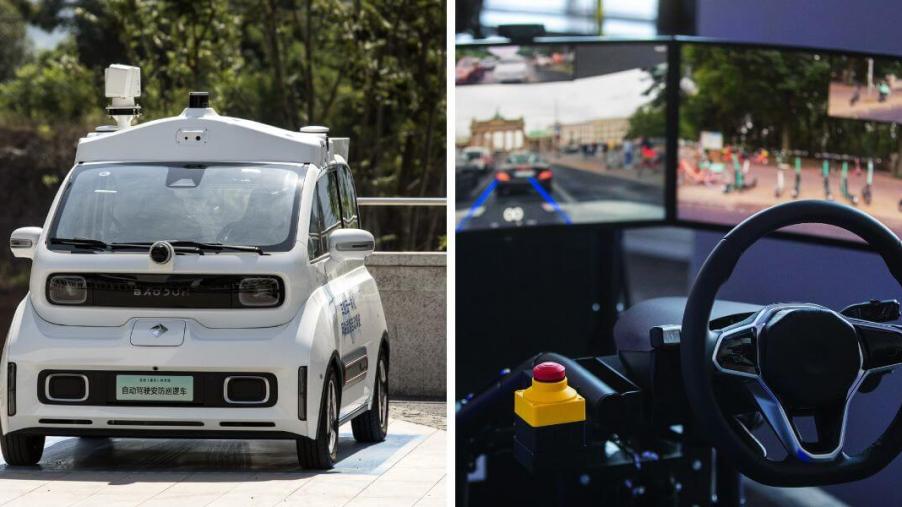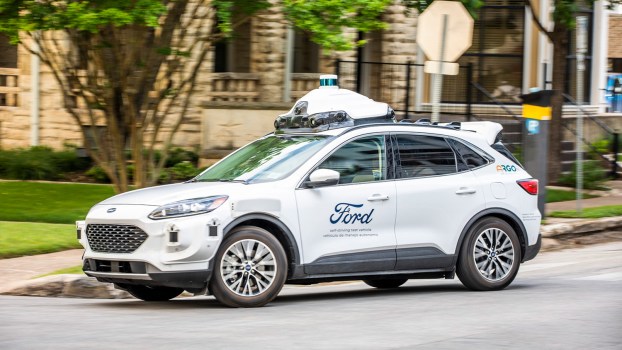
What’s the Difference Between Remote Driving and Self-Driving Cars?
Automakers predict the future of driving to be without human intervention. Autonomous vehicles could become the norm in several years, but the path from where we are now to self-driving cars seems like a long one. Instead of relying on self-driving tech that could fail with a simple system glitch, an alternative to autonomous driving could be remote driving. However, even if remote driving isn’t an alternative, it could easily be a stepping stone to the future of self-driving cars.
So, what’s the difference between remote driving and self-driving cars? Let’s explore.
How do self-driving cars work?
Most automakers agree that future autonomous vehicles will require using AI technology and continued machine learning to perfect an accident-free environment on the road. Tech Target tells us that many companies, including Audi, BMW, Ford, Google, GM, Tesla, Volkswagen, and Volvo, are testing self-driving tech in many ways.
These autonomous cars use a mixture of sensors, cameras, and data systems to understand the roadway paths, identify traffic needs, and react to changing situations on the road. Currently, very few self-driving cars exist on public roads, but some companies, including Google Waymo, are testing them in large cities.
Many safety systems have been developed from autonomous research
The research into the future of self-driving cars brings new advanced safety features to the market. We can thank this research for adding the following to our modern vehicles.
- Hands-free steering
- Adaptive cruise control
- Lane-centering steering
Both Ford’s BlueCruise and GM’s Super Cruise are the results of this same research, providing less stress for drivers behind the wheel due to the map data of these systems.
What are the 5 different levels of autonomous driving?
Level 1 – The advanced driver assistance system (ADAS) aids the driver with steering, braking, and accelerating. The ADAS includes features such as a vibrating seat, rearview camera, and alerts to warn drivers of potential issues.
Level 2 – An ADAS can steer, brake, or accelerate when required.
Level 3 – The ADAS can perform all driving tasks under some conditions. Self-parking and GM Super Cruise are two examples of Level 3 autonomy.
Level 4 – An ADAS does not require the human driver to interact or pay attention. The system can perform all driving conditions under certain circumstances.
Level 5 – Full autonomy; no driver is required and not expected to take over any controls.
What is remote driving?
Remote driving involves operating a vehicle from a remote location. Instead of relying on a vehicle’s computer systems to manage it, a remote operator can navigate streets and roadways to bring vehicles from one place to another. Car and Driver discusses using teledrivers, or remote operators, in Germany, where different technology options are being tested.
The remote operation of vehicles is already occurring in many industries. Drone and crane operators often operate these vehicles remotely. The most significant change would be the lack of a human driver behind the wheel of a car. Unfortunately, this driving still requires human operation, but from a remote location.
This could be a stepping stone to self-driving tech. However, it could also be used to fool consumers, with some remote-driven cars being staged and presented as fully autonomous vehicles.
Combining remote and autonomous driving could be the next step
Instead of jumping straight out of the driver’s seat to leave a car to drive independently, the next logical small step might be to employ remote driving as backup drivers. Some companies, such as Waymo, have had humans in the driver’s seat of testing vehicles to take over the driving operation when the self-driving tech fails.
Instead of a driver ready to intervene in the driver’s seat, a teledriver in a remote location could be the next logical step. MotorTrend discusses companies already testing this type of intervention. Unfortunately, these remote-driving cars also rely on technology to be flawless, a huge hurdle for the automotive world to overcome.





